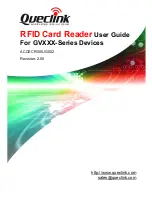
Radio Installation
Thank you for your purchase of this Custom Autosound product!
Owner- Installer: Please review installation instructions and owners manual.
Keep in mind that your radio and/or speakers are custom equipment designed specifi-
cally for your year vehicle. It should be handled carefully and installed preferably by an
auto radio specialist. We suggest that you 'BENCH TEST" the unit before installation, as
we do, prior to shipment.This is to insure that the equipment functions properly before
the time is spent for installation. This way, if a careless installation occurs and the unit
gets "fried" or some other possible damage, the installer is responsible. Shipping dam-
age does occasionally occur. If you should suspect shipping damage, please contact
the delivery company at once.
Please read the owners manual thoroughly before using your radio.
It is recommended that you disconnect the negative lead from the battery before
installing any electronic equipment in your vehicle. Reconnect when wiring is complete.
First, you will need to remove the original knobs and shaft nuts from your original radio
if present. Unplug the main wire harness and speaker leads from the back of the origi-
nal radio. Disconnect antenna lead and remove mounting strap from the back of the
radio. The radio is now ready to be removed from the dash. Check the original radio for
signs of water or oil damage from leaks. If leaks are present, do not install the new
radio. Water, oil or any other liquid damage is not covered under the new radio warran-
ty.
REAR MOUNTING STRAP OMISSION VOIDS WARRANTY!
Attach the rear mounting strap to rear of radio. Install the radio from behind the dash.
Now attach the mounting strap to the dash or firewall using an existing bolt or screw.
Now attach shaft nuts to secure the radio in the dash (DO NOT OVER TORQUE THE
SHAFT NUTS - SLIGHTLY MORE THAN HAND TIGHT IS SUFFICIENT). Once the
radio is centered and secured, you can install the knobs.
Please refer to wiring instructions on page 4&5.
Plug in antenna lead On speaker hook up make sure the positive lead goes to the posi-
tive terminal and the negative lead to the negative terminal of the speakers. A minimum
of two speakers is required for this stereo radio. DO NOT CONNECT ANY TWO
SPEAKER LEADS TO EACH OTHER OR TO VEHICLE GROUND. Radio damage will
occur. If less than four speakers are used, tape off remaining speaker leads to prevent
a short.
Connect the red power wire to a switched 12volt source. Connect the yellow memory
wire to a constant 12volt source. Wire the black ground wire to a clean, solid chassis
point or original ground wire from the factory radio.
Good Listening! Audio quality is only as good as speaker quality!
3
16
Noise Suppression
All CAM electronics are designed for maximum electrical noise rejection. In some instal-
lations however, electrical noise may affect the quality of sound reproduction.
If electrical noise is present after installing your Slidebar radio, identify the source of the
noise using the descriptions under Sources Of Electrical Noise. To eliminate the noise
follow the procedures described under Elimination of the specific noise source.
1-Check all ground connections. Remove paint away from painted surfaces to secure a
.
good electrical ground.
2-Check battery posts. If contacts are corroded or loose ,clean and tighten both
.
terminals.
3-Check battery or add fluid if needed.
4-Check condition of spark plug and distributor leads. Worn or damaged leads will
.
generate noise than can be very difficult to eliminate.
5-Check installation of factory noise suppressor(s). Verify that the connections are
. . .
solid. Refer to the vehicles service manual for nose suppressor location or allow a
. .
qualified mechanic to inspect the device (s) for you.
6-(Optional) Some professional installers will install a simple L.C. noise filter even if
. .
.
there is no noise present in the system. This is a simple and relatively inexpensive
. .
device available at your nearest Autosound dealer or electronic supply store. Most
. .
filters designed for car stereos carry a current rating of 3 amps or more. Follow the
. .
manufacturers installation instructions. This filter is installed in the power lines of the
.
car stereo.
Sources Of Electrical Noise
Alternator Noise
This noise is generally a high pitched whine present with engine running.The pitch of the
whine will vary as engine RPM varies. Alternator noise usually becomes more apparent
with an electrical load to the system. Switching the headlights on usually increases the
noise.
Elimination
1. Install an L.C.noise filter (available from your Autosound dealer or your nearby
.
electronic or automotive supply store)in the power lines of your radio. This filter
. .
should be rated at 3 amps minimum.
2. Start the car’ s engine.switch on the lights (to accentuate the noise) and switch
. .
on the USA-66. If noise is still present, proceed to step 3.
3. Install an alternator noise filter (available from your Autosound dealer or your
. . .
nearby electronic or automotive supply store). Follow manufacturer’s installation
. .
instructions.
Antenna Noise
A static or crackle heard through the speakers, usually when the car is running ,but
sometimes present with the ignition off. If a crackling static if present, follow the steps
outlined below to confirm the antenna as the source of the noise.
1. Start the car engine.
2. Switch on the radio.
3. Adjust the volume so that noise is audible.
4. Reduce volume setting of the car stereo but do not switch it off. If noise decreas
. .
es or disappears, the signal is most likely being picked up by the car antenna. If the
noise persists after following the steps listed below, proceed to ignition Noise.
Slidebar Manual_new_USA-5_manual_peter 1/23/2014 9:19 AM Page 4




























